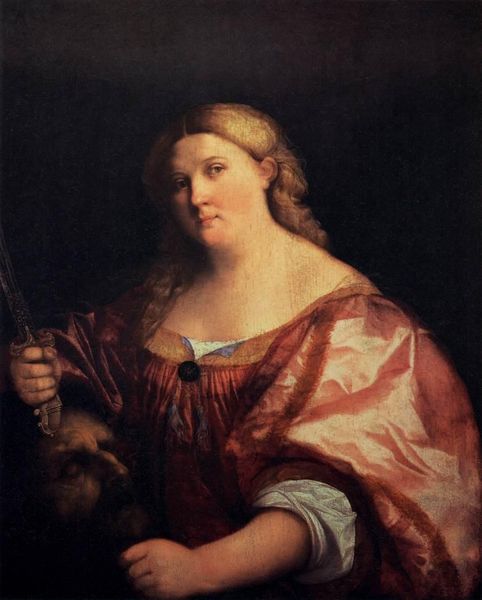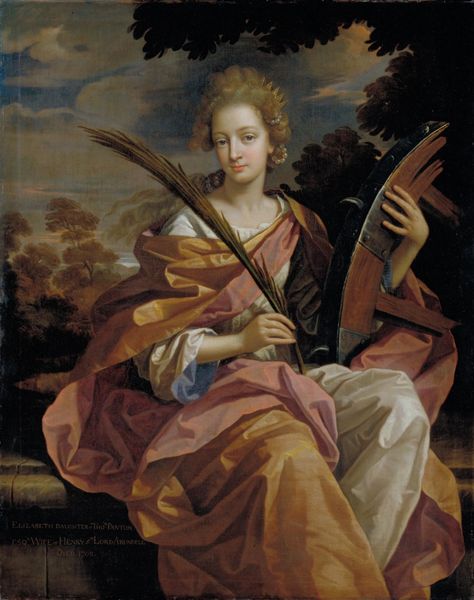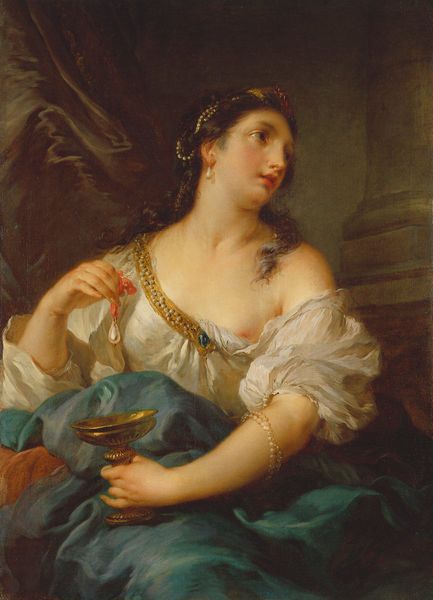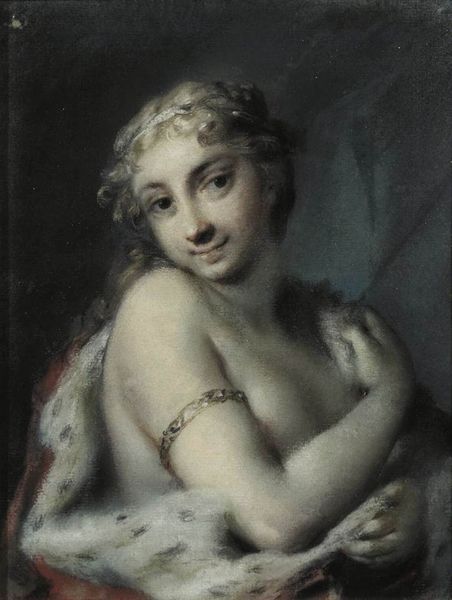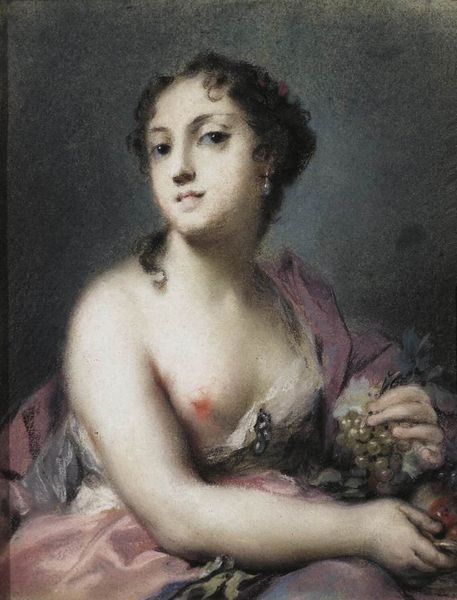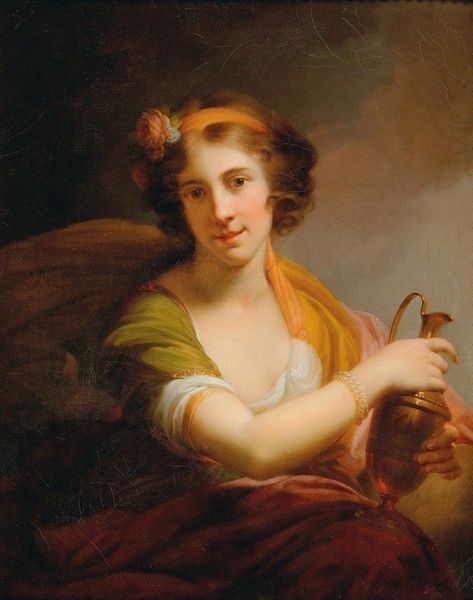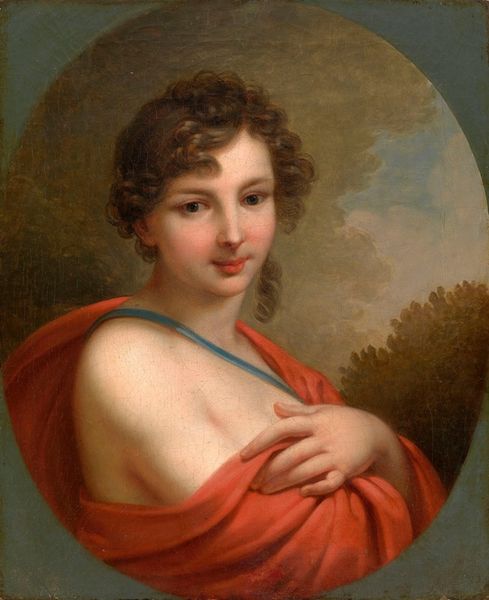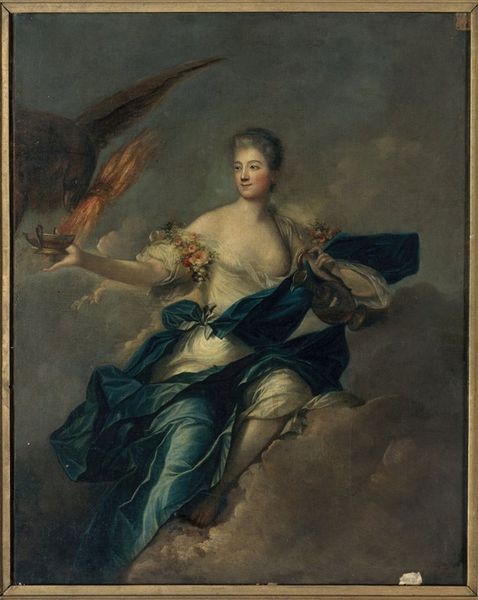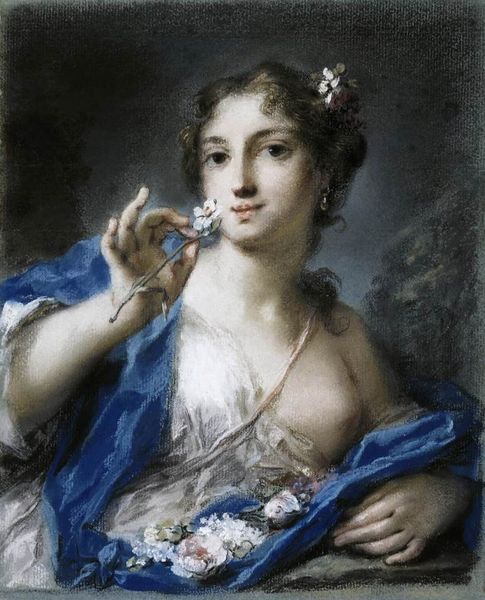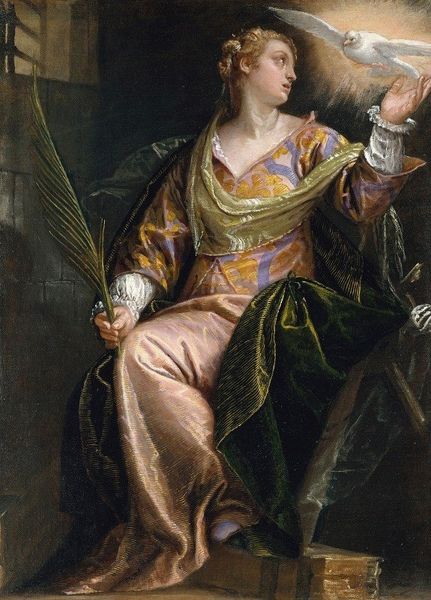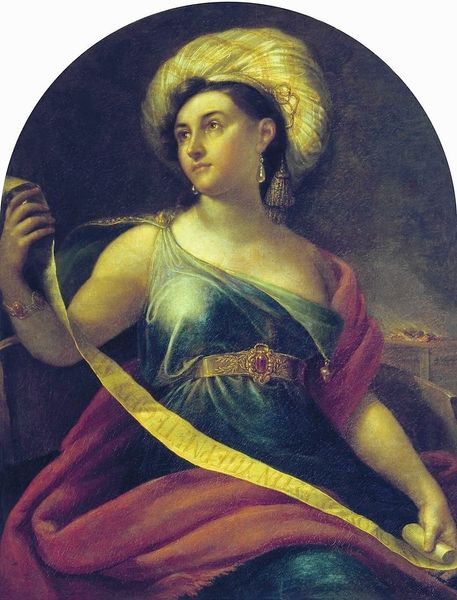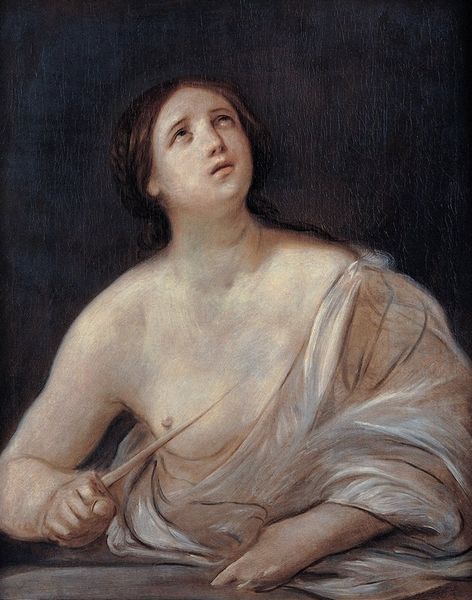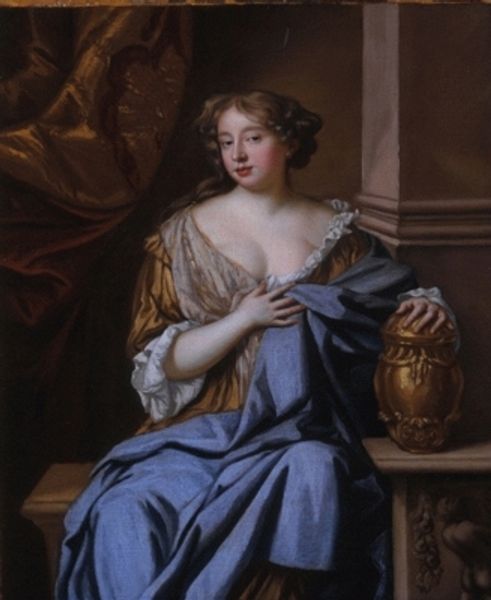
painting, oil-paint
#
portrait
#
allegories
#
allegory
#
baroque
#
painting
#
oil-paint
#
academic-art
Copyright: Public domain
Curator: The work before us, titled "Fame," remains undated, but it’s attributed to Sebastiano Conca. Rendered in oil paint, it’s currently held in a private collection. Editor: There's a curious ambiguity in the subject’s expression; her gaze seems both commanding and uncertain. The rich, almost brooding blues are immediately captivating, but also somber, don’t you think? Curator: Baroque artists frequently deployed allegories. This is no exception, which in this case explores the visual and cultural associations of Fame personified. While Conca embraced academic art ideals, you can still see elements of the baroque within this image. How Fame should appear and behave visually would likely stem from established views regarding the relationship between civic achievement and personal standing during that period. Editor: Indeed. Notice the trumpet she holds. That’s a familiar symbolic item, representing pronouncements, often declarations of victories. However, in contrast to military dominance, she is carrying olive branches too, emblems for both victory and peace. Also, her partly undressed garment shows that she’s no mortal but some other mythical creature or ideal. Curator: It seems likely that an affluent patron would request a portrayal of themselves portrayed within allegorical terms. Perhaps a family crest on the trumpet would give clues, assuming it could be linked to an influential figure or a noble house with links to significant accomplishments during the time. The distribution and control of artistic productions served political purposes. Editor: What's fascinating is that Fame, this seemingly desirable ideal, has always been double-edged. An ephemeral puff of smoke, it fades or turns sour at the drop of a hat, as common metaphors illustrate. Does Conca capture a nuance of this duality? Is the lady smiling, perhaps even just a little mocking, or is she pensive instead? Curator: Conca occupied a vital position within the Roman art milieu. His interpretation may echo traditional views on accomplishment. A commissioned portrait would offer the ideal opportunity to represent patrons' perception of themselves for contemporaries and later generations through a set aesthetic vocabulary and recognised conventions. Editor: And now it's our turn, isn’t it? To ponder over "Fame." It’s a great illustration how symbolism is always so context-sensitive and culture-bound. Curator: Absolutely, a valuable testament to how art captures shifting cultural values.
Comments
No comments
Be the first to comment and join the conversation on the ultimate creative platform.
